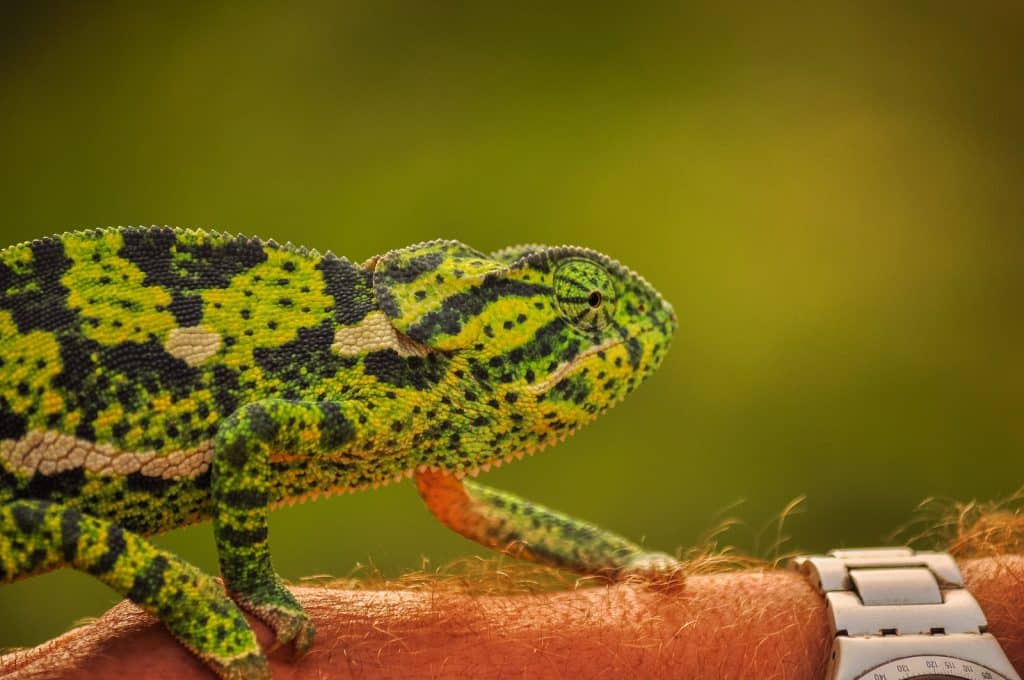
Are you a fan of the slow-paced, curious-eyed, and ever-changing appearance of the chameleons? These fascinating creatures are quite appealing. You might be wondering if chameleons would make a great pet.
Although chameleons make great pets when they are in the right conditions, they are not the best choice for everyone. Chameleons need a strict care plan with a more hands-off approach. This might appeal to some owners, but not to others. Before you commit to owning a Chameleon, here are some things you need to know.
All about Chameleons
| Scientific Name: | Chamaeleonidae |
| Family: | Chamaeleonidae Rafinesque |
| Habitat Natural: | Tropical climates and rainforests |
| Temperature: | 70-80 degrees Fahrenheit |
| Temperament: | Shy, slow, and solitary |
| Type: | Arboreal |
| Colors: | Brown, green, red, blue, orange, yellow |
| Length: | 12-20 inches |
| Weight: | 0.4-7 ounces |
| Lifespan: | 2-10 Years |
| Niveau of experience: | Intermediate |
Chameleons, also known as Chamaeleonidae are found in hot climates. They can be found anywhere from deserts to rainforests. They are found in tropical climates throughout Africa, South Europe, and Asia.
Chameleons are known for their ability to blend in with their environment by changing the color of their skin. There are many species, some with amazing color-changing abilities and others that have subtler shades.
Chameleons are shy, relaxed creatures that love to be left alone. You won’t need to buy a companion as chameleons are so isolated. However, you must respect their boundaries.
You might be tempted to show off your chameleon to friends if you like the idea. It’s great to show your friends what your reptile can do, but it can be stressful for them.
You’ll also have to keep your word, even if it means providing expensive food or care. What are the details?
These are the 9 Things You Need to Know Before You Get a Chameleon
1. Chameleons aren’t cuddly
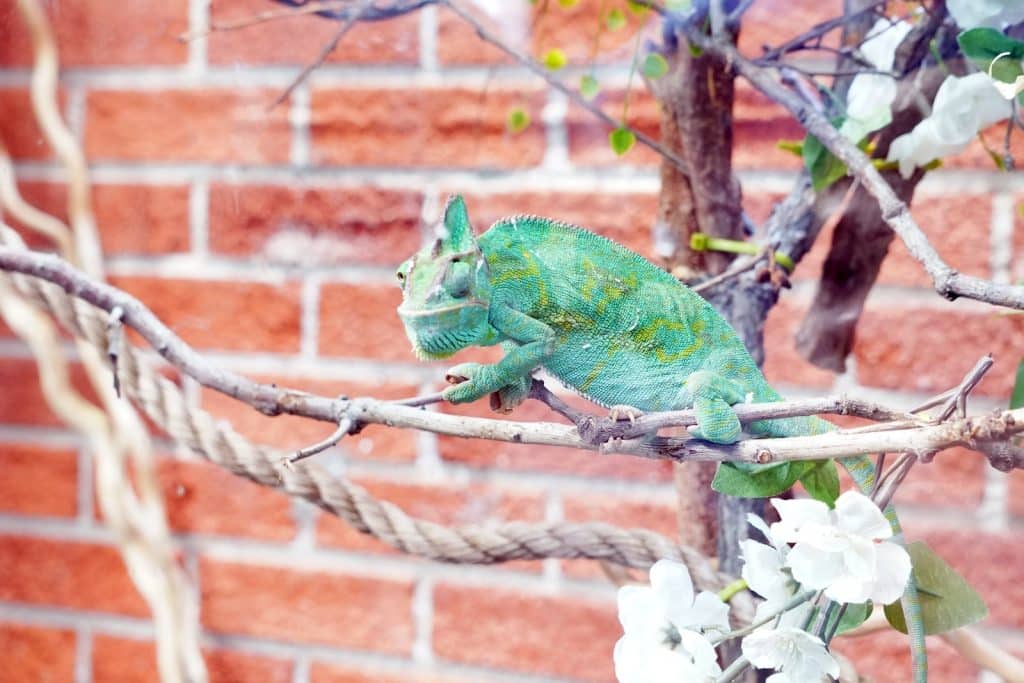
Chameleons are not going to hang out with you all day if you want them to. Chameleons do not like being handled. You shouldn’t hold them for too long. This can have a negative effect on their health.
Certain perfumes and laundry detergents can make chameleons very sick. You should not startle them by making slow movements.
You can expect to only look at a chameleon if you choose it. Stress can make chameleons sick and cause serious health problems. Some lizards, such as bearded dragons and geckos, can be extremely social. Chameleons, however, prefer to be in their own cages.
2. There are many types of Chameleons
There will be plenty of options when choosing your chameleon. There are so many patterns they can create.
There are a few types of chameleons:
- Chameleon with four-horns
- Pygmy chameleon
- Chameleon with flat-necked neck
- Fischer’s chameleon
- Carpet Chameleon
- Senegal chameleon
- Panther Chameleon
- Oustalet’s Chameleon
- Chameleon with a veil
- Meller’s Chameleon
- High-casqued chameleon
These are some things to keep in mind when you pick up your chameleon.
There are many types of Chameleons. They can vary in size and appearance depending on their species. Some are more colorful than others. Others are more manageable but can be difficult to take care of.
When you are looking for a chameleon, make sure to do your research. This will allow you to create the right environment for them.
3. Large enclosures are required for Chameleons
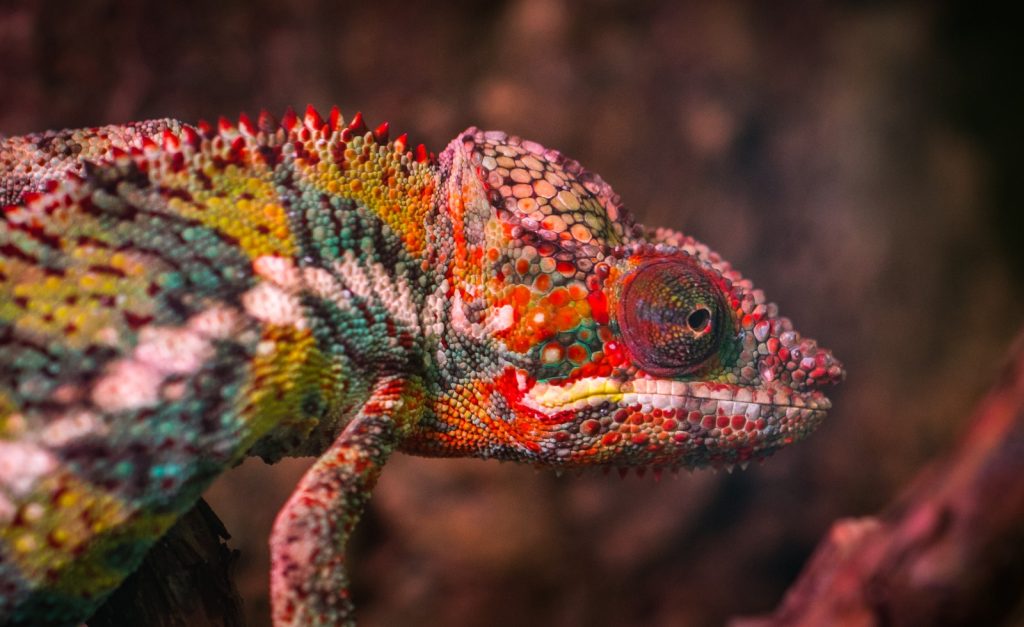
The chameleon is a small lizard that can reach 18-24 inches with a tail. The average size of females is between 10 and 13 inches. They will require a tall cage with plenty of foliage and trees to climb in, as they are wild animals that live in trees.
These lizards need a cage of at least 4’L x 4’H. The cage’s height is more important than its width, but it shouldn’t be smaller.
4. Chameleons require specific conditions
Chameleons can be found in tropical climates that are hot and humid. They require humidity levels between 65% and 80%. They can be comfortable at temperatures between 70 and 90 degrees Fahrenheit. To monitor the temperature and humidity levels of the enclosure, you can purchase gauges.
Water must be offered frequently. You must give water often to your chameleons. They get most of their hydration from licking the leaves in their cage. There are misting systems available that can be set up to automatically turn on every few hours. This keeps your chameleon hydrated and gives it moisture.
5. Chameleons Follow a Strict Diet
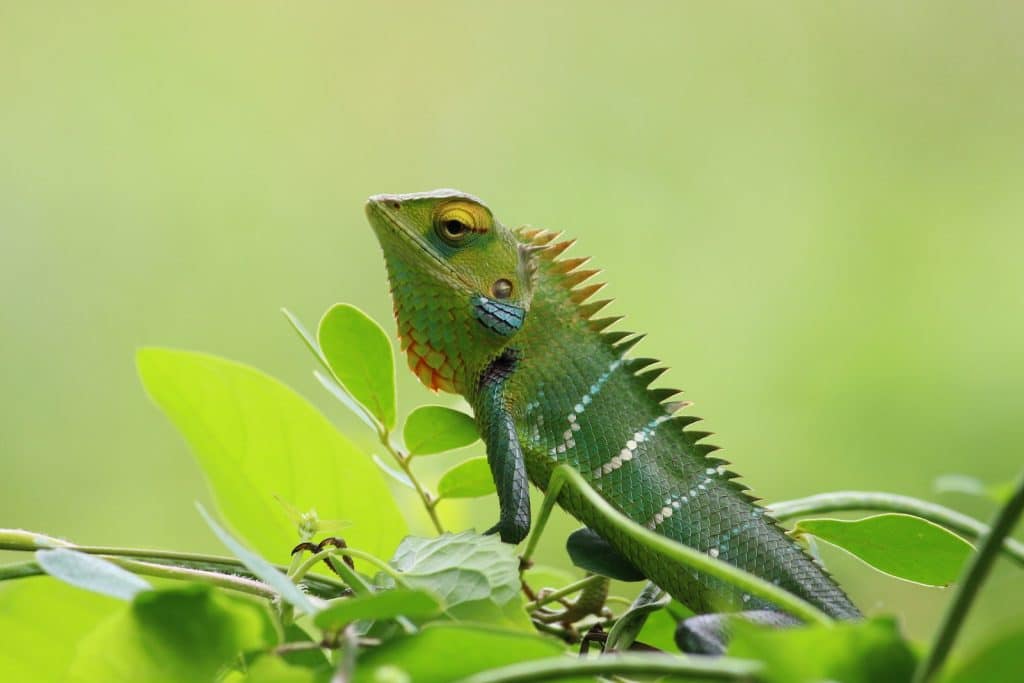
Chameleons are not allowed to eat anything. Insectivores are chameleons that eat mostly insects. Adults should have one large meal every other day.
The majority of chameleons consume a diet consisting of:
- Crickets
- Stick bugs
- Locusts
- Mantids
- Grasshoppers
These are some things to keep in mind when you pick up your chameleon.
Chameleons can speak at lightning speed, so be prepared for quick grabs. Their tongues can grow to twice as long as their entire body. If you intend to hand-feed your Chameleon, it is best to use tongs.
Their diet should include calcium, which is a vital mineral. To give them calcium powder, you will need to buy it. To provide nutritional care for their pets, many owners mix the powder with gut-loaded insects.
Calcium powder with vitamin D added must be handled carefully This vitamin is vital, but they only get it from UV light. Intake of too much vitamin can lead to serious health problems.
In the alternative, vitamin D3 deficiency can lead to poor bone structure and skin health. It is important to ensure that lighting, temperature, humidity, and diet are all in harmony.
6. Chameleons can be very sensitive
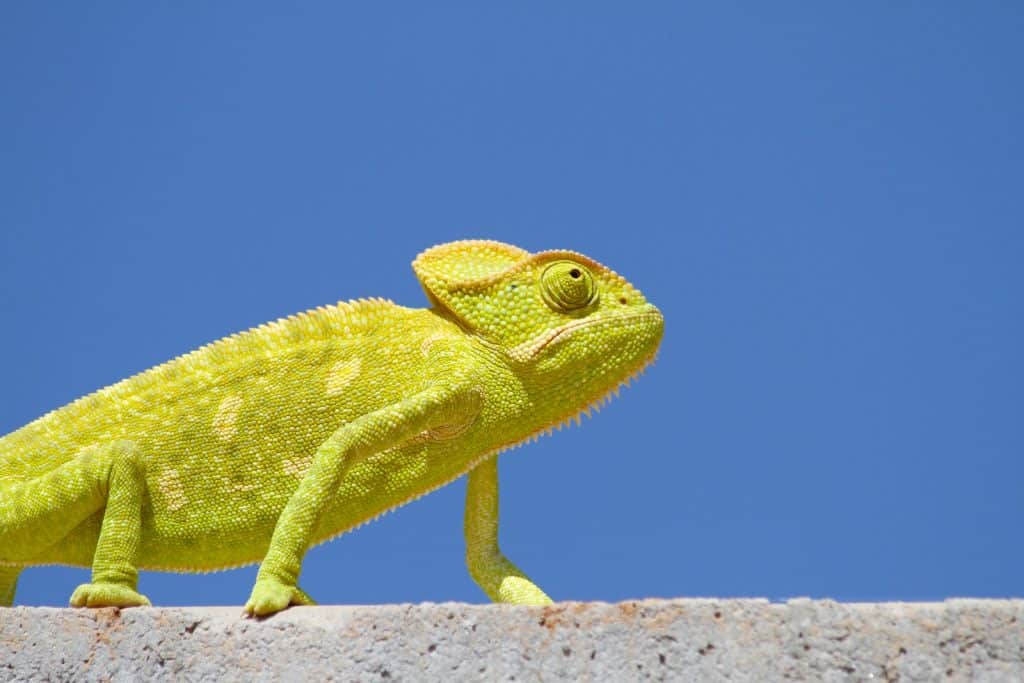
Chameleons are a difficult choice for first-time reptile owners. Chameleons are sensitive to environmental conditions and can become sick quickly. They also don’t respond well to external stressors. It could have serious consequences if you don’t know how to care for them.
Many chemicals and toxic substances can cause problems in Chameleons. It is important to avoid spraying aerosol sprays or household cleaners near their enclosures. These chemicals can cause chameleons to become very sick, even fatal if they are exposed to too many at once.
7. Chameleons are Arboreal Creatures
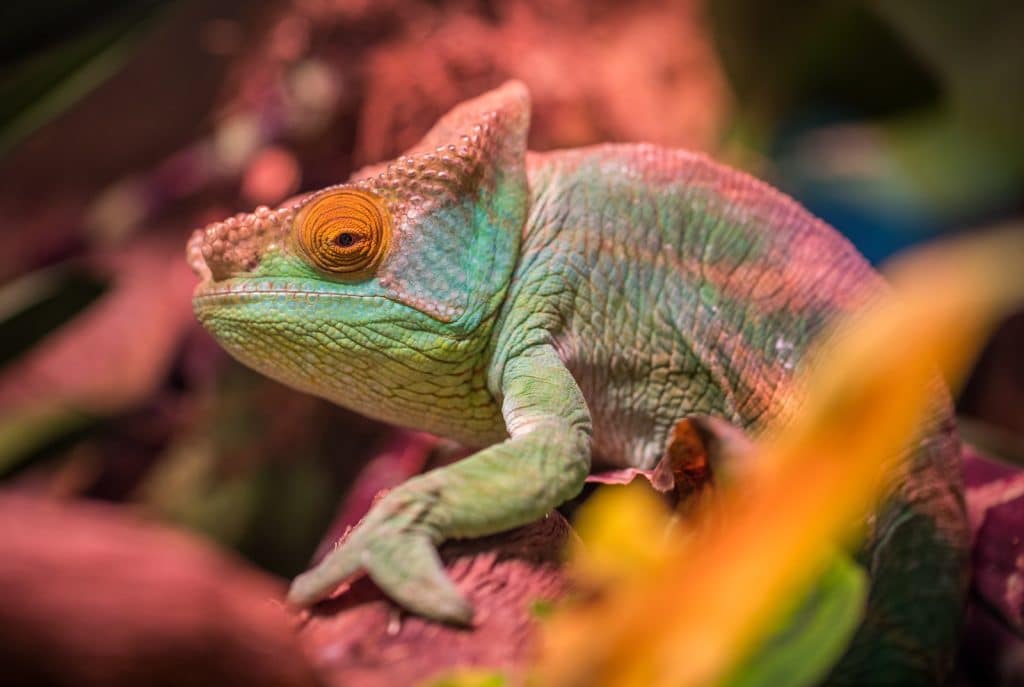
Your chameleon might not be able to see the bottom of its cage unless there is something wrong. Chameleons are very fond of trees and spend their time climbing on branches. It is important to provide (preferably) live plants for their enclosure.
These are some of the most beautiful plants for chameleon arrangements:
- Rubber tree
- Golden pothos
- Jade
- Hibiscus
- Spider plant
- Weeping fig
These are some things to keep in mind when you pick up your chameleon.
Your enclosure will be more alive if you have plants and trees. They are vital for your reptile’s health and provide fresh air. The cage is large and takes up a lot of space so it adds an extra dimension to make it natural and attractive.
8. Not all Chameleons Change Their Color
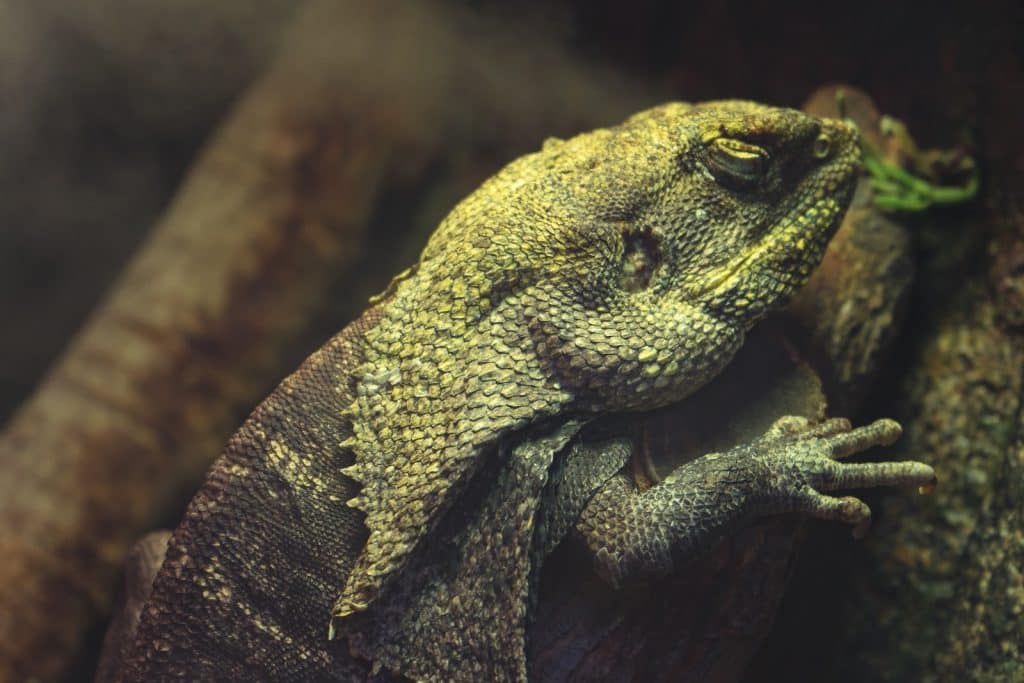
It is well-known that chameleons can alter their color to blend in with the environment. But not all chameleons can change their color dramatically. Some can change between the bright colors of oranges, blues, and pink. Some people can choose between brown and green.
Guanine crystals are found in the skin cells of Chameleons. Chameleons have the ability to shift the space between crystals. This alters the skin’s light reflection. The color-changing abilities of females are usually less than those of their male counterparts.
Chameleons that can change their color include:
- Panther chameleons
- Chameleons with veils
- Meller’s Chameleons
- High-casqued chameleons
Chameleons that change less color include:
- Fischer’s chameleon
- Pygmy chameleon
- Chameleons for adolescents
- Female chameleons
9. Also, Chameleons need vet care
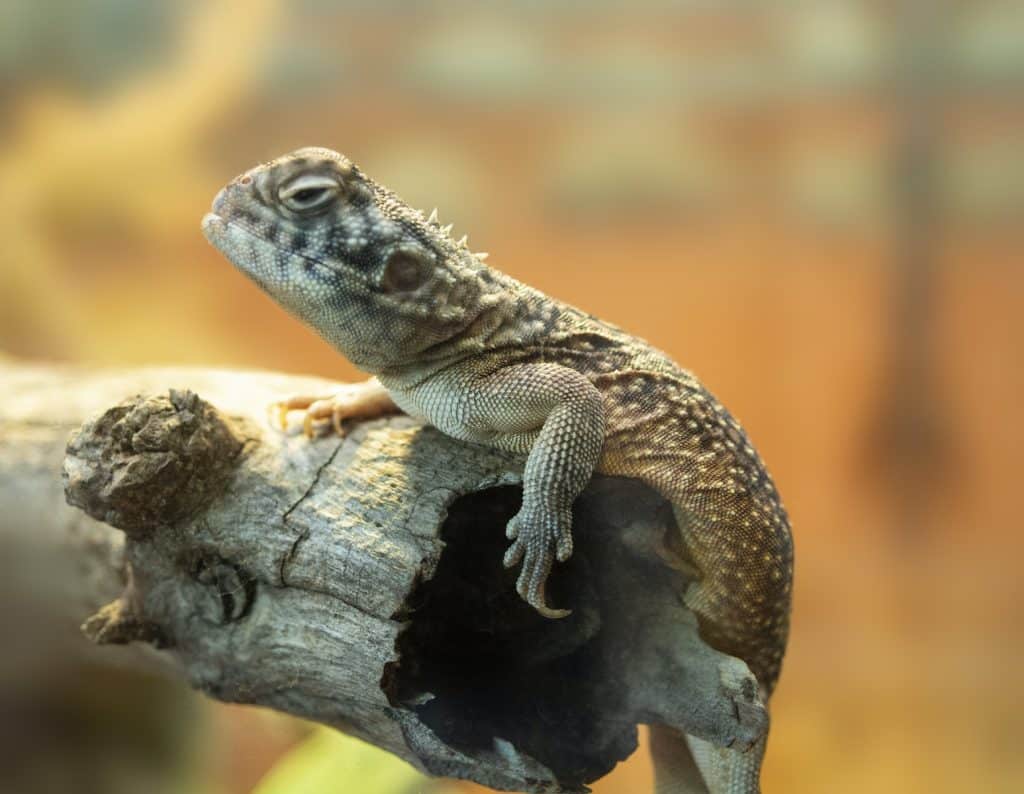
It’s true that reptiles also need vet care. It may be more difficult to find an exotic vet with chameleon experience. You should check with local exotic vets before purchasing your chameleon. This will allow you to plan for routine care.
Reptile exams may not be something that a regular veterinarian who takes care of pets such as dogs and cats would do. Many vets will refer you to a local facility that can. Do not be afraid to ask around for other options.
For any necessary checks, it would be a good idea to take your chameleon to the veterinarian every six to twelve months. Your chameleon may have minor or major health problems that need to be checked more often. It is smart to have a fund for emergency situations just in case. Exotic vets are generally more expensive than traditional offices.
Chameleons: What to Look for?
These are some things to keep in mind when you pick up your chameleon.
- Be aware of the Care Requirements. Use your newly acquired chameleon knowledge to ensure that your reptile receives 100% proper care. Be familiar with all aspects of routine maintenance, possible sensitivities, as well as your overall health needs. You’ll become more knowledgeable the more you do research.
- Choose Physical Appearance – The intriguing appearance of a Chameleon is what probably attracted you to this idea. You should look for a chameleon who resembles the image in your head but don’t base your decision solely on this.
- A proper setup is essential for your chameleon. You will need to care for this difficult reptile.
- Choose Healthy Specimens – When you purchase a chameleon, ensure that they are reputable for producing healthy offspring. Avoid pet shops as they can often neglect to provide the proper care. This can lead to shorter lives and worsening health problems.
- Be prepared for the unexpected. Pet care can be expensive. You will need to have an exotic veterinarian on hand so your chameleon can be seen for routine checks or emergency visits.
Are Chameleons right for you?
If you’re not prepared, caring for Chameleons can be difficult. You can learn as much about them as you like so that they live the full life they deserve. These amazing reptiles require constant care.
You might be looking for an easygoing reptile who doesn’t mind being handled often, so you may want to look for other cold-blooded beauties. These reptiles don’t like contact and prefer to be on a branch.
Are chameleons good for pets?
Chameleons, in general, are great pets for experienced reptile keepers. This is not to mean that inexperienced owners cannot successfully keep a chameleon, but there are certain cage and care requirements to consider.
Is it okay to touch chameleons?
No chameleon likes being handled by humans. Anyone who told you that was making a false sales pitch to get you to buy a pet from him. Chameleons should only be treated as pets on par with tropical fish – beautiful to look at but not to be touched or carried.
What if a chameleon lands on you?
A lizard or chameleon crawling up on any body part at night has no effect on the human. However, if any of these land on the body, it has excruciatingly unpleasant consequences. It is not considered unlucky if a lizard creeps up from the right side of the body and crawls down from the left.
Can chameleons hear what you’re saying?
Chameleons have poor hearing, yet they can detect some sounds. According to Softschools.com, they can detect noises with frequencies ranging from 200 to 600 Hz. Not bad for a reptile that lacks ears and other standard hearing apparatus that other animals have
What do chameleons enjoy eating?
Feed your chameleon crickets or waxworms on a regular basis. Twice a week, dust insects with a calcium supplement. Veiled Chameleons should also consume greens on a regular basis, such as collards or mustard greens. Chameleons do not drink from containers.
Do you be bitten by chameleons?
While chameleons will bite you, the bite is not unpleasant and seldom breaks the skin, so there is no need to be concerned, and it should not deter you from adopting one of these amazing pets. Bites, in our experience, are mainly caused by novice owners handling them too forcefully.
How dangerous is a chameleon?
Chameleons do not contain any venom. If a person or animal bites or consumes a chameleon, it will not consume any toxin (poison) that may make them sick or kill them. However, chameleons contain salmonella, which may cause food poisoning in humans.
Chameleons spew poison, do they?
Appearance. Chameleons often seem green or brown in order to blend into their arboreal home. This natural color shields them from predators. It keeps them safe since they lack poison or a lethal bite to protect themselves.
What’s up with my chameleon hissing at me?
Chameleons are slow-moving, tree-dwelling lizards that hiss at pet owners and potential predators in their native habitat. Frightened mature chameleons will hiss loudly to avoid contact with the item or person approaching them with their swiveling eyes.
Do chameleons enjoy being handled?
Chameleons dislike being held. They dislike social engagement and prefer to remain alone. However, there are a few chameleon species that don’t mind perching on people for a few minutes.